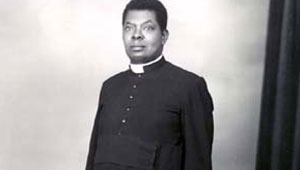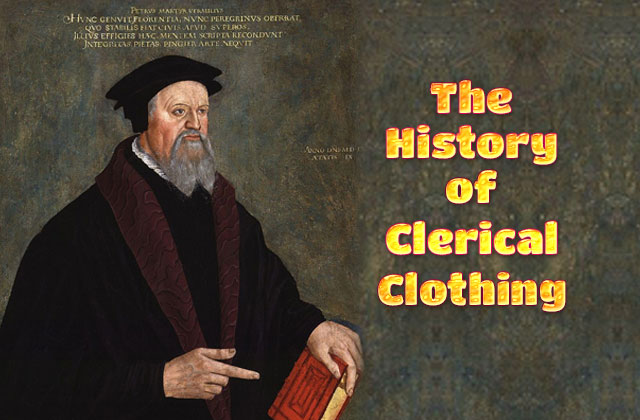Clerical clothing is a term used to refer to clothes worn by clergy when not presiding over liturgy; the non-ceremonial garments that still indicate the clergy’s profession – the daily wear of priests, deacons, and other clergy members.
While not all churches mandate a certain set of garments for their clergy, those that do include denominations such as the Anglican Church, Methodist churches, Eastern Orthodox Churches, Lutheran churches, Episcopalian churches, and the Roman Catholic Church. These do not all have the same uniform as each other, but each has its own particular outfit that is preferred – or even mandated – for its clergy to wear.
History
It was not until late in the eighth century AD that clergy began wearing garments that set them apart from the laity as a rule. In the early first century, preserved documents indicate that clothing that drew attention to a clergy member was discouraged. It was preferred that the clergy be indistinguishable from the people around them at that time. A German council in 742 bid priests and deacons to wear longer garments, rather than the shorter tunics that had become popular, but even then, the garments were not generally considered to be clerical. In 875, Pope John VIII sent a letter to the Archbishops of York and Canterbury, admonishing them to have their clergy wear ecclesiastical attire, so it would appear that sometime during that century, attire became more specific for clergy members, in Europe.
In Asia, monks were known for distinctive garb, but the clergy at large did not have any sort of uniform until 691 when the Trullan council specified that robes were to be worn or excommunication for a week would be enforced.
Since the eighth century, specific clothing has been specified for clergy of many denominations.The canon law regulated the clergy’s clothing, and many local synods added supplements to that law.
In the thirteenth century, the Fourth Lateran council set forth a mandate that clergy was to dress distinctively to separate them from the laymen who were also scholars at the universities. The mandated dress was the cassock, which remained the common daily wear for priests until the middle of the twentieth century.
One of the most noticeable and memorable pieces that has long been associated with the clergy is the clerical collar. Most often white, worn with a black shirt, the collar began as a strip of linen, closed at the back of the neck, with the shirt’s collar not folded down behind it. As time went on, the clergy began to fold down the collar, often leaving only a small rectangle of the white showing, as many are pictured. Today, many are made of plastic for simplicity of both wearing and cleaning.
The clerical collar can be in the form of a collarino – which is basically a standard dress shirt whose collar is adapted to accommodate an insert of white cloth or plastic- or a neckband, which is a detachable collar.
Some choose to add preaching bands, or tabs, to the collar when delivering a sermon. This reflects the ascot-like ties that preachers wore in the eighteenth and nineteenth centuries. Liturgical wear of a tippet, or large black scarf, may also have been a predecessor of the tabs.
Rather than a collar, some Lutheran clergy of the Church of Denmark and the Church of the Faroe Islands wear a ruff instead. This is a wide, stiff band of ruffled, starched linen.
Robes, such as albs (a name taken from the Latin tunica alba meaning white tunic), are often liturgical nowadays, though when they first came into common use, they were standard daily wear for many clergies.

A chasuble, from a Latin word that means “little house” or “cottage,” is a piece of cloth that is a circle with an opening for a head – sometimes with a hood attached – that covered the entire wearer. It was declared formally as clerical clothing by the Council of Ratisbon in 742 AD.
The color of the garments also has meaning. Black is the most common color, due to its formality and the sense of solemnity it imparts. Black represents simplicity and service. White (sometimes with gold) is equally common and usually is used for joyful ceremonies such as baptisms, confirmations, weddings, and ordinations. White signifies joy and purity. Red is used for the commemoration of martyrs and represents the blood of Christ. Purple is most often used for remembrance or reflection situations, and (since 1988) officially worn during Lent and Advent. Green represents life, hope, and growth, and is a sort of “wildcard” for color; it can be worn anytime that another color is not already outlined (such as purple for Lent).
In today’s world, daily wear for the clergy has mostly switched over from cassocks and ascots to suits or shirt and tie, with or without a jacket. Of course, this depends upon the denomination of the clergy in question.
In the Anglican Church, the standard for clerical clothing is a double-breasted cassock, with either a fascia or a belt.
Methodist clergy generally wears a business suit with a clerical collar, though a cassock may be added in some situations. A pectoral cross is usually worn by all clergy, including deacons.
The clergy who follow Easter Orthodoxy wear cassocks, primarily. Other garments may be added, such as a skufia (soft cap) or kamilavka (stiff cap), which are occasionally awarded to clergy as a mark of honor. They generally do not wear clerical clothing outside of church, however.
What clerical clothing is worn by Lutheran clergy depends on both location and synod. Often, it consists of a clerical shirt or cassock and a clerical collar (usually detachable). As mentioned above, some Lutheran clergy in Denmark wear a ruff instead of a clerical collar. Swedish Lutherans have a frock coat that is worn rather than a cassock.
Roman Catholic clergy are required to wear distinctive clothing. This was not intended to be a status symbol, per se, but rather to allow them to be noticed as clergy in public. The clerical collar and cassock, in one form or another, is the prescribed array.
Generally speaking, clerical clothing is used less often in common situations in today’s world, with semi-formal clothing taking over for many; however, in more formal situations, clerical clothing continues to be the distinctive and obvious clothing it has been for centuries.

